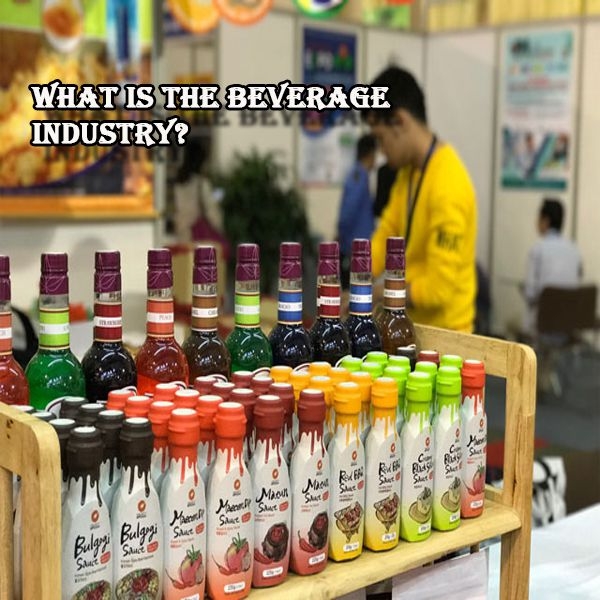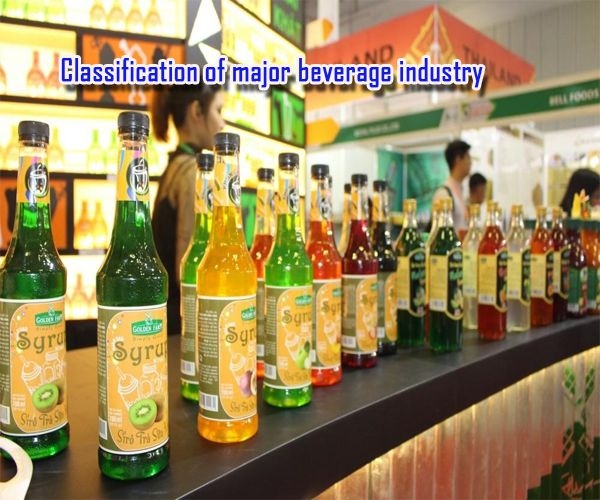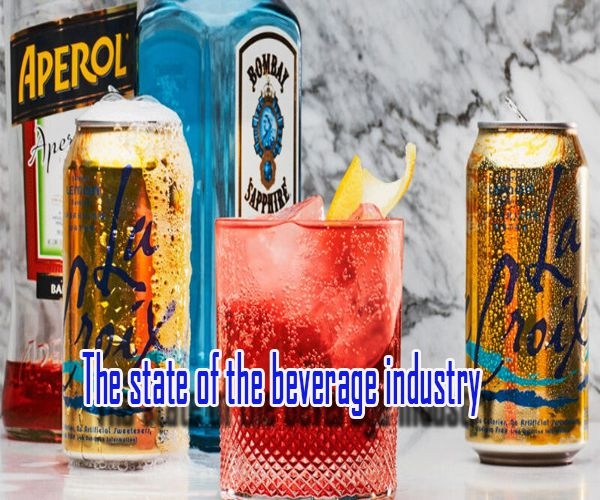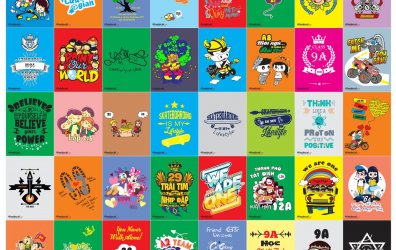V
vietnhan
beverage industry has appeared for a long time, in vietnam market, soft drinks are flooded with countless different brands. in vietnam, the beverage industry is considered to have strong growth potential. if you are learning about this industry then do not miss the following content. let's find out an overview of this field with us.
WHAT IS THE BEVERAGE INDUSTRY?
the beverage industry belongs to the fast-moving consumer goods industry. is an industry that produces various types of bottled beverages and soft drinks. these include beverages such as bottled water, soft drinks, energy drinks, milk, coffee, tea, nutritional drinks and alcoholic beverage products.

hygiene requirements in this field are very high. businesses need to ensure and maintain hygiene in the production process. they need to meet the specified quality standards. in addition, the manufacturer must ensure the expiry date of mineral water, fruit juice, wine, ...
currently, vietnamese consumers are increasingly demanding high-value beverages. so companies have tried to meet the needs and changes of the market.
vietnam has the following main types of beverage: carbonated mineral water, non-carbonated mineral water, purified water, soft drinks, energy drinks, tea and fruit juices.
fresh water production and consumption in vietnam is 85%. the remaining drinks such as tea, juice, energy drinks, etc. account for only 15%.
CLASSIFICATION OF MAJOR BEVERAGE INDUSTRY
the beverage industry is divided into two main categories:
group of alcoholic beverages: includes beer, wine, cocktails, fermented milk, etc. the basic ingredients of alcoholic beverages include water, alcohol and some digestible compounds.

the group of alcoholic beverages will bring some benefits such as slowing down the oxidation process, reducing stress. however, they still carry more harmful effects than good. if you use too much, you will encounter problems such as:
- alcohol increases the risk of oropharyngeal cancer, oral cancer, impaired liver function
- easy to cause stomach bleeding
- memory disorder, loss of balance, memory loss if drinking alcohol regularly
- easy to lose water, if used for a long time will cause kidney failure
- damage to the marrow, causing diabetes and potentially cancer
group of non-alcoholic beverages: including soft drinks, syrup, bottled water, canned, juice, coffee and tea industry...
in this group there are several types that provide water and many trace elements for health. it helps to heal and beautify. especially mineral content >1000mg is therapeutic mineral water, there are many benefits if used as directed by the doctor
beverages provide water, minerals, purification, body detoxification, antioxidants, can be used for cooking.
THE STATE OF THE BEVERAGE INDUSTRY
beverages of all kinds are in the group of famous consumer goods. in recent years, this is an important economic sector with great potential for development. in vietnam, in the period from 2020 to 2025, the growth rate is forecasted from 5% - 6%/year (according to many economic experts).

with a stable micro-economy, it has opened up many export opportunities and attracted more foreign investment. besides, beverage production enterprises are also constantly changing in a positive direction. they are constantly improving their capacity and competition. improve investment in infrastructure including houses, workshops, warehouses, yards or modernize production processes and corporate governance.
despite being affected by the covid-19 pandemic, this is also the time to develop strongly for the food and beverage industry in vietnam. especially when consumers are increasingly paying more attention to nutritional foods of plant origin. they switch to using organic food or healthy, convenient nutritional ingredients... along with that is a shift in habits from eating at restaurants to at home and concerns about imported foods. ... making the forecast of consumption demand of some food and beverage groups constantly increasing and forecasted to have many breakthroughs in 2021 and the following years.
a quick survey conducted by vietnam report at the end of 2020 shows that, under the pressure of the covid-19 epidemic, 50% of customers have spent more on foods that strengthen resistance and the immune system as well as clean, healthy foods... meanwhile, 63.7% of customers cut spending on alcohol and beer. because of that fact, businesses in this industry are having to adjust their operating capacity accordingly.
accordingly, businesses in the food industry must increase their operating capacity to about 30%, but on the contrary, beverage businesses must reduce their production capacity to below 80% compared to before the pandemic. it is clear that most businesses in the food and beverage industry have been affected by the covid-19 pandemic.
WHAT ARE THE CHALLENGES IN THE BEVERAGE INDUSTRY?
faced with the reality of the pandemic and the increasing demand of customers, food and beverage businesses need to prioritize a number of strategies such as revenue growth, current market development, and research promotion. and improve product quality, diversify supply sources (prioritize domestic suppliers); at the same time, expanding and developing online distribution channels on e-commerce platforms. this is the conclusion from the mistakes and difficulties of businesses in the process of responding to the covid-19 epidemic in the past year.
CONCLUDE
today, vietnam is considered as one of the markets with very potential food and beverage consumption. with a high growth rate, the beverage industry is one of the most attractive.
WHAT IS THE BEVERAGE INDUSTRY?
the beverage industry belongs to the fast-moving consumer goods industry. is an industry that produces various types of bottled beverages and soft drinks. these include beverages such as bottled water, soft drinks, energy drinks, milk, coffee, tea, nutritional drinks and alcoholic beverage products.

hygiene requirements in this field are very high. businesses need to ensure and maintain hygiene in the production process. they need to meet the specified quality standards. in addition, the manufacturer must ensure the expiry date of mineral water, fruit juice, wine, ...
currently, vietnamese consumers are increasingly demanding high-value beverages. so companies have tried to meet the needs and changes of the market.
vietnam has the following main types of beverage: carbonated mineral water, non-carbonated mineral water, purified water, soft drinks, energy drinks, tea and fruit juices.
fresh water production and consumption in vietnam is 85%. the remaining drinks such as tea, juice, energy drinks, etc. account for only 15%.
CLASSIFICATION OF MAJOR BEVERAGE INDUSTRY
the beverage industry is divided into two main categories:
group of alcoholic beverages: includes beer, wine, cocktails, fermented milk, etc. the basic ingredients of alcoholic beverages include water, alcohol and some digestible compounds.

the group of alcoholic beverages will bring some benefits such as slowing down the oxidation process, reducing stress. however, they still carry more harmful effects than good. if you use too much, you will encounter problems such as:
- alcohol increases the risk of oropharyngeal cancer, oral cancer, impaired liver function
- easy to cause stomach bleeding
- memory disorder, loss of balance, memory loss if drinking alcohol regularly
- easy to lose water, if used for a long time will cause kidney failure
- damage to the marrow, causing diabetes and potentially cancer
group of non-alcoholic beverages: including soft drinks, syrup, bottled water, canned, juice, coffee and tea industry...
in this group there are several types that provide water and many trace elements for health. it helps to heal and beautify. especially mineral content >1000mg is therapeutic mineral water, there are many benefits if used as directed by the doctor
beverages provide water, minerals, purification, body detoxification, antioxidants, can be used for cooking.
THE STATE OF THE BEVERAGE INDUSTRY
beverages of all kinds are in the group of famous consumer goods. in recent years, this is an important economic sector with great potential for development. in vietnam, in the period from 2020 to 2025, the growth rate is forecasted from 5% - 6%/year (according to many economic experts).

with a stable micro-economy, it has opened up many export opportunities and attracted more foreign investment. besides, beverage production enterprises are also constantly changing in a positive direction. they are constantly improving their capacity and competition. improve investment in infrastructure including houses, workshops, warehouses, yards or modernize production processes and corporate governance.
despite being affected by the covid-19 pandemic, this is also the time to develop strongly for the food and beverage industry in vietnam. especially when consumers are increasingly paying more attention to nutritional foods of plant origin. they switch to using organic food or healthy, convenient nutritional ingredients... along with that is a shift in habits from eating at restaurants to at home and concerns about imported foods. ... making the forecast of consumption demand of some food and beverage groups constantly increasing and forecasted to have many breakthroughs in 2021 and the following years.
a quick survey conducted by vietnam report at the end of 2020 shows that, under the pressure of the covid-19 epidemic, 50% of customers have spent more on foods that strengthen resistance and the immune system as well as clean, healthy foods... meanwhile, 63.7% of customers cut spending on alcohol and beer. because of that fact, businesses in this industry are having to adjust their operating capacity accordingly.
accordingly, businesses in the food industry must increase their operating capacity to about 30%, but on the contrary, beverage businesses must reduce their production capacity to below 80% compared to before the pandemic. it is clear that most businesses in the food and beverage industry have been affected by the covid-19 pandemic.
WHAT ARE THE CHALLENGES IN THE BEVERAGE INDUSTRY?
faced with the reality of the pandemic and the increasing demand of customers, food and beverage businesses need to prioritize a number of strategies such as revenue growth, current market development, and research promotion. and improve product quality, diversify supply sources (prioritize domestic suppliers); at the same time, expanding and developing online distribution channels on e-commerce platforms. this is the conclusion from the mistakes and difficulties of businesses in the process of responding to the covid-19 epidemic in the past year.
CONCLUDE
today, vietnam is considered as one of the markets with very potential food and beverage consumption. with a high growth rate, the beverage industry is one of the most attractive.




